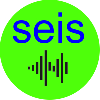Geophysical Methods
exploration, near surface and marine methods
Seismology |
Seismic exploration |
Seismic source |
Seismic Refraction |
Seismic Reflection |
Seismic MASW-REMI |
Borehole |
Marine Seismic |
Seismic Processing-Imaging |

Seismic exploration
Seismic exploration is the use of seismic energy to probe beneath the surface of the earth, usually as an aid in searching for economic deposits of oil, gas or minerals, but also for engineering, archeological and scientific studies. In exploration seismology, the seismic method is applied at or near the earth's surface to measure the elastic properties of the subsurface and to detect variations in those properties. Variations and discontinuities in subsurface elastic properties may be indicative of changes in lithology or pore fluids. Exploration seismology has been applied for subsurface investigations of depths as great as 150 km; however, it is particularly useful for depths up to 10 km. For these depths, the seismic method is capable of detecting and spatially resolving features at scales as small as tens of meters or less. This resolving power is significantly finer than the resolving ability of other remote geophysical methods for this depth regime. Because this region of the earth's subsurface includes nearly all of its oil and gas reserves, exploration seismology plays a prominent role in the energy industry. Geophysicists are able to artificially create vibrations on the surface and record how these vibrations are reflected back to the surface. Seismic Exploration is arguably the biggest breakthrough in petroleum and natural gas exploration came through the use of basic seismology. Seismic is perhaps the most commonly familiar geophysical technique used to locate potential oil and natural gas deposits in the geologic structures within the earth. They can be conducted on onshore (land) and offshore (marine). Land and marine surveys operate on the same basic principles but differ operationally. Similar to an ultrasound imaging a human body, seismic surveys generate images tens of thousands of feet below the surface of the earth. Both land and marine surveys include a source and a receiver. They may differ in the pattern of the receiver system, concentration of measurements taken within a given area; and the type of receiver or sensor used.PASTE RESPONSIVE AD
Specialized seismic equipment is deployed to generate acoustic waves into the ground using different sources such as vibrators or explosive on land or compressed air at sea. These waves are reflected at the boundary between the different geological layers in the subsurface and recorded as seismic reflection shot points by a network of highly sensitive sensors laid out on the surface. Extremely complex processing sequences are run on very powerful computers to convert this data into seismic images representative of the subsurface in two, three or four dimensions (the fourth being the calendar time to detect variations in the fluid distribution). Sophisticated software helps the geophysicist to reconstruct the shape and physical properties of the geological layers.
Acquisition of seismic exploration data involves the synthetic generation of seismic waves, and their subsequent detection after passing through or reflecting off the region of interest (i.e., the "target"). The most frequently practiced form of seismic acquisition is the reflection seismic survey. A reflection seismic survey typically involves generating hundreds to tens of thousands of seismic source events, or shots, at various locations in the survey area. The seismic energy generated by each shot is detected and recorded at a variety of distances from the source location. The detectors used to transform ground movement into an electrical voltage that can be recorded are geophones and hydrophones, generically referred to as receivers. For every source event, each receiver generates a seismogram or trace, which is a time series representing the earth movement at the receiver location. Each trace has a reference time zero corresponding to the time of its source event. A record of all traces for each shot is usually written to a medium such as digital support for subsequent study, including processing, display and interpretation.
PASTE RESPONSIVE AD